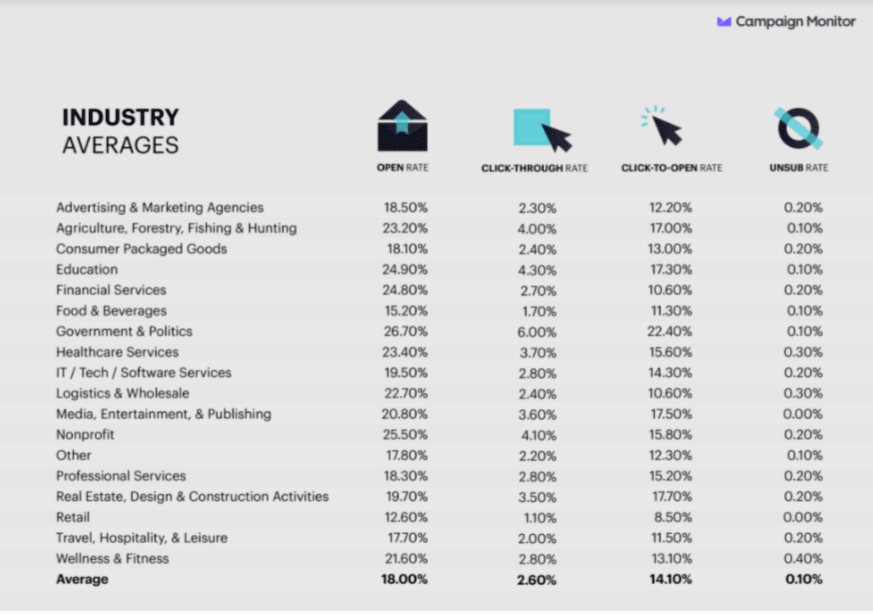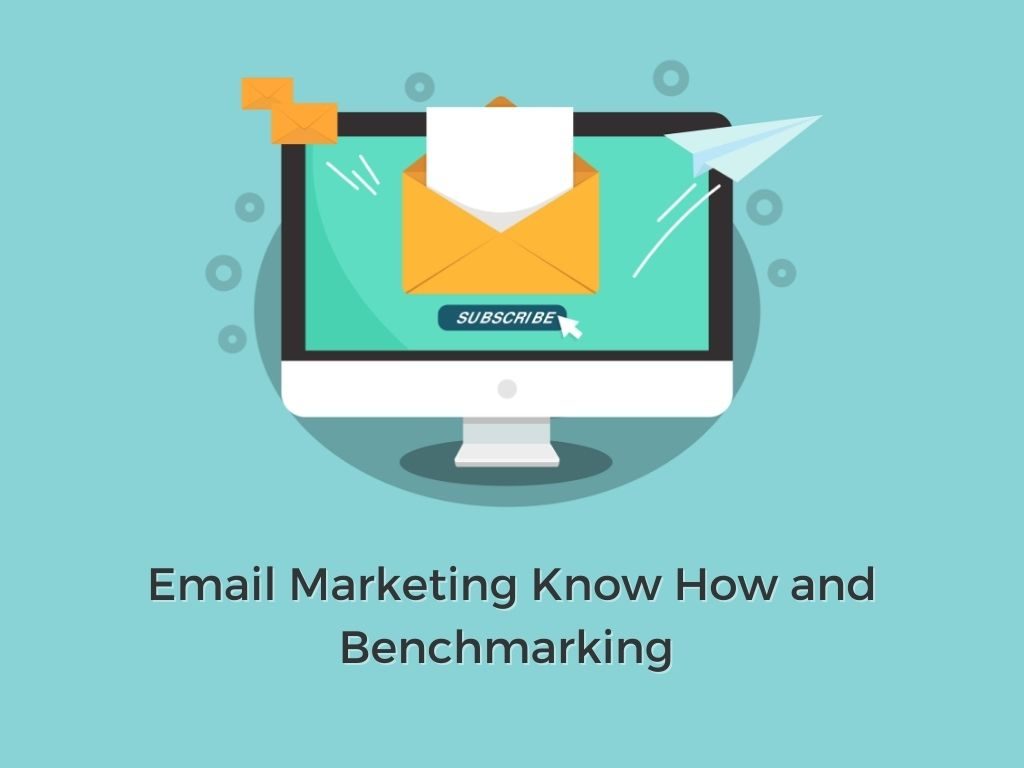On the go? Listen to a voice recording:
Reading time: 8 minutes
Published: 2022 | Author: Bonita Burnett
Did you know that 4 out of 5 marketers would rather give up social media than email marketing?
It’s not that surprising when you consider that email marketing allows you to reach and connect with your target audiences, and create those long, loyal relationships that all marketers love. However, without an email marketing strategy, your efforts are likely to miss the mark and produce lackluster results.
Good news though! As an email marketing agency, we’ve got a few tricks up our sleeve to nail your email marketing strategy, and the benchmarks you can use to make sure you’re getting the right results.
What is an email marketing strategy and why is it important?
At the heart of it, your email marketing strategy is the plan you develop and follow to achieve your desired business outcomes, and then use it to evaluate how effective your efforts have been.
It’s not a stand-alone affair though and needs to be developed as part of your overall business strategy and key marketing goals. For example, if your focus is to remain top of mind with your potential, existing or lapsed customers, your email marketing strategy will need to focus on engaging and building loyalty via involvement (emails that contain news, latest updates or competitions). Or if it’s sales you’re after – your emails will need to regularly feature new releases or offers.
As well as being an incredibly powerful communication tool, when used effectively it can also generate leads and drive sales – particularly with people that have already experienced your services or products, and that you want to up-sell, cross-sell or increase frequency of sales with.
Take a peek at these stats on the value of email marketing:
- On average, for every $1 you spend, you can expect a return of $51
- 31% of B2B marketers say email newsletters are the best way to nurture leads.
- 81% of B2B marketers say their most used form of content marketing is email newsletters.
- In Australia, emails were opened and clicked on more frequently than in years past, a trend seen around the world that was influenced by COVID-19. Open rates grew from 18.7% to 20.6%, while click rates increased from 2.8% to 3.1%
- 74% of Baby Boomers think email is the most personal channel to receive communications from brands, followed by 72% of Gen X, 64% of Millennials, and 60% of Gen Z.
We could go on and on… but we’re sure you get the gist that email marketing is really valuable for your business, and 100% meets the customers’ need for fresh, quality content every day – when done right. So what are the next steps for nailing your strategy? Let’s take a look.
Key elements to include in your email marketing strategy
1. Set your goals
Make sure your email marketing strategy is created alongside your other business strategies so that your goals align with your overall business objectives and digital marketing strategy. Some common goals include growing your email subscriber list, increasing your open rates, and increasing your email CTR (click through rate). Remember that your goals need to be SMART (Specific, Measurable, Achievable, Relevant, Time-Bound), to be effective.
2. Define your target audience
When planning your email marketing strategy, your overarching philosophy should always be ‘relevance’ and ‘value’. You want to make sure that your emails are so valued by your customers (or target audience), that they race to read them before anything else in their inbox.
That’s why it’s key to know who your target audience is (the group of customers that are most likely to buy and value your product or service because it benefits them) and plan your content around them accordingly.
Once you understand who your audience is, create some detailed personas that describe them as this will help with creating the right messaging.
3. Segment your database
Did you know that a segmented email marketing campaign will generally result in 23% higher open rates and 49% higher click‑through rates than unsegmented campaigns? Segmenting your database definitely takes a bit more work, but the results are so worth it as it means that you can personalise the content to what your target audience is after.
Common examples of segmentation include high value customers (based on their spend and frequency of purchase) engagement rate (based on open rates, clicks and conversion) and category preferences (products bought or viewed).
4. Set KPIs
You need to get clear on how you want to measure your performance and what success looks like. Some of the key ones to monitor include:
- Open rate – calculated as # of opens / # of successful sends
- Click through rate (CTR) – clicks on links within the email
- Website traffic – if your email hyperlinks are to your website
- Conversion – this depends on what you consider as a conversion; it can range from an enquiry to viewing a page or purchasing a product
- Hard Bounce rates – this measures how ‘clean’ your database is as hard bounces mean the email address is not valid and the email cannot be delivered.
- Unsubscribes – although it’s not uncommon to have people opting out of receiving your emails whenever you send one (try not to take it personally ;)), it’s still a key one to watch as the goal is to ensure unsubscribes are as low as possible and not trending upwards!
5. Choose the right email marketing platform
This is a very important step as the incorrect platform can negatively affect your deliverability, be too complex or too basic to use, or be expensive. Investigate what automation it offers as this can be particularly helpful with processes and admin. Be clear on what you want out of your platform and do your homework – a good place to start is our pros and cons of email marketing platforms for small businesses.
6. Content Plan
Your email marketing strategy comes together in a plan, usually in the form of a content calendar that you base on your objectives, target audience and KPIs. This will also form part of your content marketing strategy that will take into account your other communication platforms such as social media and blogs.
Going forward, your marketing content plan will outline the content of each email version/campaign, the target audience and timelines to communicate with your customers.
7. Optimising Your Email Campaigns
The hard work isn’t over yet – now you need to make sure that your emails are perfectly presented and that you choose formats, fonts, and text sizes that are relevant to the type of email you’re creating and your brand image. Plus, tone of voice and subject line all need to be on point and relevant to the recipient.
While we’re on subject lines, we can’t reiterate enough the importance of getting this right. If you choose the wrong one, all your hard work is literally ‘‘deleted” without even a look as subject lines are the single most important factor in determining the open rate.
Always, always use A/B testing to test your subject lines, and always optimize for mobile (mobile opens account for as much as 46% of all email opens).
Other research around the best times to send your emails (A/B testing can also be helpful here) are a good idea too.
8. Analyse and adapt
The last – and critical – step in ensuring that you nail your email marketing strategy is to make ongoing improvements based on the learnings and successes of your campaign (that’s why the KPIs are set right at the start!)
Measuring the success of your email marketing for your business
Regular check-ins and analysis of your email performance is key. As an email marketing agency (that’s particularly good at marketing automation!), if a campaign isn’t reported in our office, it never happened.
But how do you know what your results should look like and if your campaign has been a success? That’s where email marketing benchmarks come in.
Do keep in mind though that benchmarks can quickly change, so it’s important to keep on top of trends. That’s another great reason why using an email marketing agency can be a huge help as they always have their fingers on the pulse in this ever changing digital space.
At a high level, here are some benchmarks for all industries (Campaign Monitor).
- Average open rate: 18.0%
- Average click-through rate: 2.6%
- Average click-to-open rate: 14.1%
- Average unsubscribe rate: 0.1%

Some experts say that email marketing for your business is dead, but they’re wrong. Email still reaches more customers than any other digital platform and the ROI for this type of marketing is some of the highest out there.
The key to success with your email marketing strategy lies in setting goals so you know what you want to achieve, determine your target audience, segment your mailing list, create a calendar and schedule, optimize your emails and analyse.
If you’re feeling overwhelmed about creating an effective email marketing strategy and calculating conversion rates for email marketing, don’t worry, we can help. As an email marketing agency, our team of experts will work with you to make sure that your email marketing strategy reaches the right audiences and gets the results you want.
So give us a call or email and let’s talk more about how we can support you with your email marketing strategy for your business.
Want more articles relevant to email marketing strategy? Here’s our smorgasboard:
- What is digital marketing?
- Which Email Marketing Provider is Right for your Small Business?
- The Basics of Digital Marketing
- Understanding Social Media Marketing
Enjoyed this article and want more? Sign up now to our marketing snippets!
If you’ve found this article useful, please share it with others.

